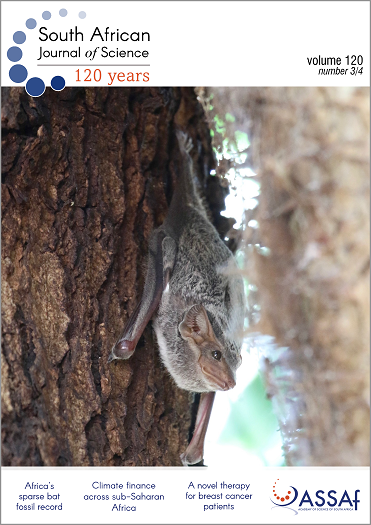We the hunted
DOI:
https://doi.org/10.17159/sajs.2024/16387Keywords:
Homo erectus, Swartkrans, Paranthropus robustus, taphonomy, early HomoAbstract
Classic depictions of human evolutionary ecology cast Homo as predator and other hominins, including Paranthropus robustus, as prey. Such hypotheses rest on a small number of fossils that exhibit evidence of carnivore predation, including the iconic SK 54 cranium from Swartkrans in South Africa. Here we demonstrate that the SK 54 cranium shares its closest affinities with H. erectus sensu lato rather than P. robustus. Demonstrating that Homo was prey for leopards at Swartkrans weakens the historically significant hypothesis that Homo was better able to avoid predation because of being behaviourally and technologically advanced compared to Paranthropus. Subsequent ideas about hominin palaeobiology derived from this hypothesis warrant reconsideration.
Significance:
- The small sample of early Homo from southern Africa is increased by the allocation of the SK 54 cranium to that genus.
- Evidence from Swartkrans suggests that Homo was prey for leopards.
- Hypotheses concerning the biology, behaviour, and technological capabilities of Homo and P. robustus stemming from Brain’s seminal work, The Hunters or the Hunted?, should be reassessed.
Published
Issue
Section
License

All articles are published under a Creative Commons Attribution 4.0 International Licence
Copyright is retained by the authors. Readers are welcome to reproduce, share and adapt the content without permission provided the source is attributed.
Disclaimer: The publisher and editors accept no responsibility for statements made by the authors
How to Cite
- Abstract 806
- PDF 1655
- EPUB 174
- XML 175
Funding data
-
La Trobe University
-
Australian Research Council
Grant numbers Discovery Grant DP170100056












.png)